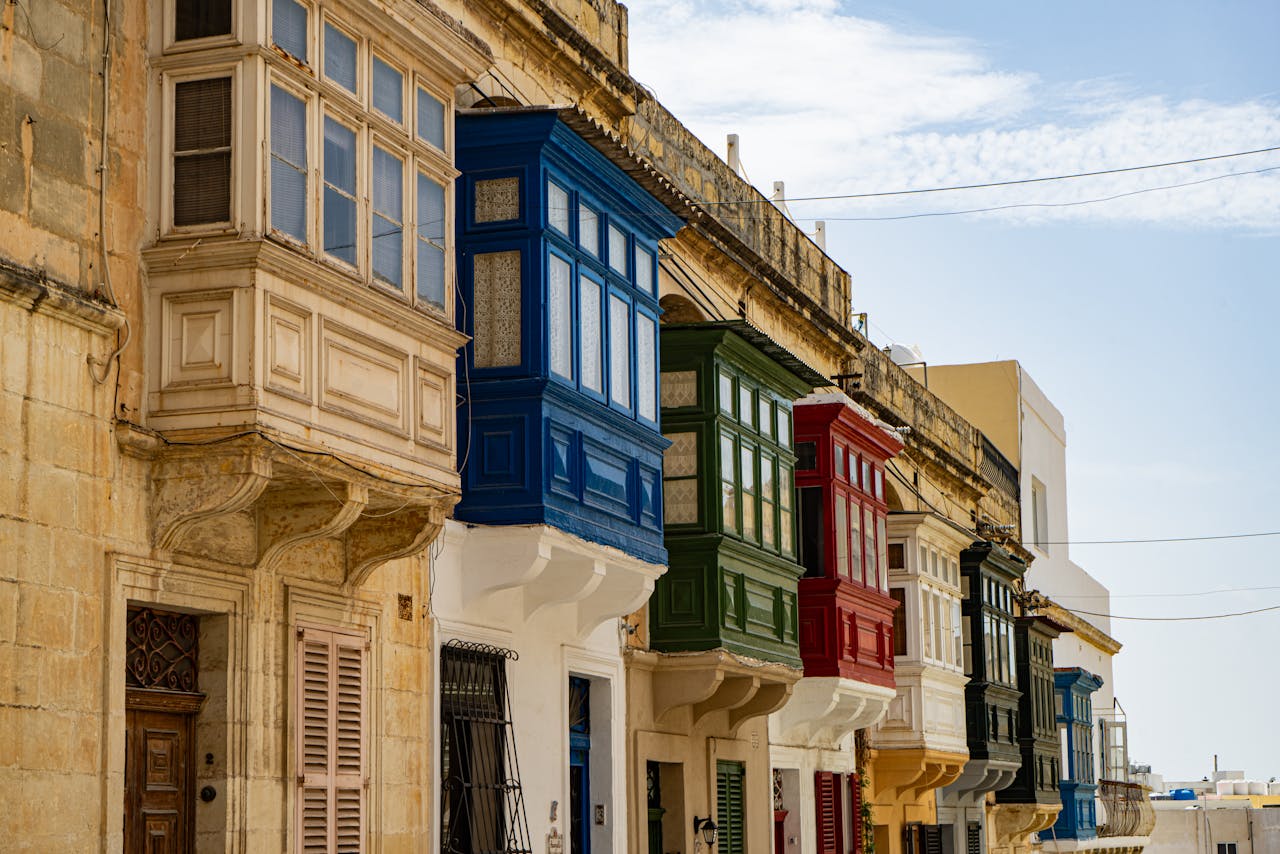Transport was down across the board in 2020, the year COVID-19 hit, with air and cruise passengers registering a sharp decline over the figures registered the previous year.
The COVID-19 pandemic changed life practically overnight as countries and people scrambled to take the precautions necessary to avoid the worst effects. With many countries shutting their borders and most workplaces shifting to a work-from-home setup, the virus left a critical impact on the various modes of transportation.
New figures released by the National Statistics Office show, for the first time, the full extent of the pandemic’s impact.
Here is how the pandemic impacted Malta’s transport sector in numbers at a time when the country took an unprecedented decision in its history to shut its borders to commercial travel, a decision it has not reinstated since.
Air
During 2020, passenger traffic at Malta International Airport reached a total of 1,752,779, a decrease of 76 per cent when compared to 2019. The highest decreases in air passenger traffic were recorded in the second quarter and the fourth quarter with decreases of 99.6 per cent and 88.2 per cent respectively.
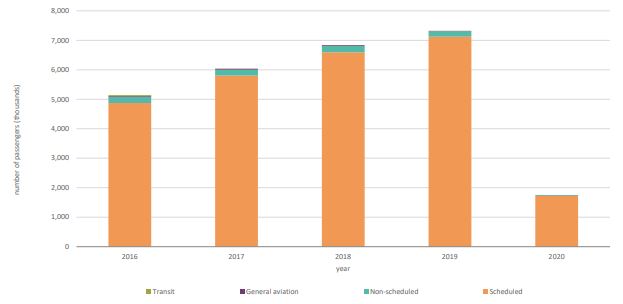
During the year under review, there was a most noticeable decrease in outbound and inbound passenger traffic between Malta and Far/Mid East and other countries (-82.3 per cent) and between Malta and the UK (-79.9 per cent). On the other hand, the least passenger traffic decrease was registered between Malta and South/North America, down by 32.2 per cent.
The United Kingdom retained the traditional trend of being the top single origin and destination, with 343,188 passengers, contributing to 19.6 per cent of the total passenger movements. Italy, the second largest single destination, registered 336,115 passengers, a decrease of 76.8 per cent over 2019.
Cargo was far less impacted, decreasing by just 3.9 per cent for a total weight of 15,788 tonnes. Additionally, a total weight of 1,298 tonnes of mail was processed, a decrease of 37.4 per cent over 2019.
Sea
In 2020, 10,104 vessels arrived at Malta’s ports, a decrease of 18.5 per cent over 2019.
As at end of 2020, the number of vessels registered under the Maltese flag amounted to 8,168, a net decrease of 425 vessels over 2019. Furthermore, 590 vessels were registered under the Maltese flag in 2020, with the majority being pleasure yachts, amounting to 432 or 73.2 per cent of the total newly registered vessels.
During 2020, the cruise line sector saw steep decreases in both passenger traffic and cruise liner calls, with just 32 cruise liner calls being recorded, 327 less than the previous year.
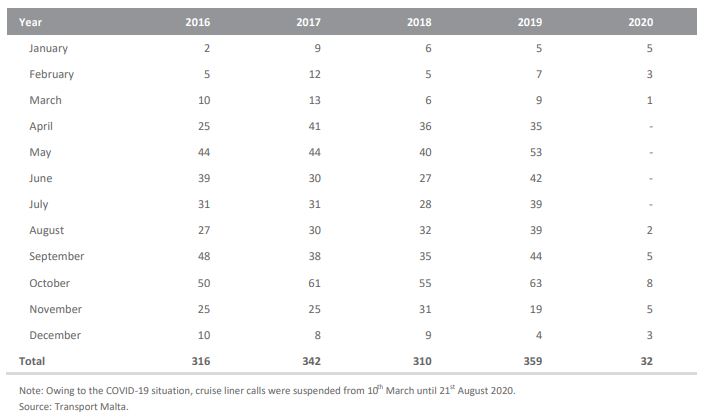
When compared to 2019, transit passengers decreased by 90.7 per cent, totalling 58,827.
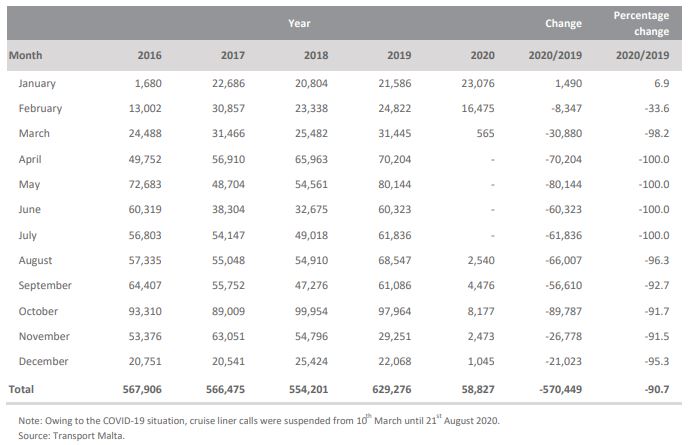
This all led to the cruise industry having a terrible year.
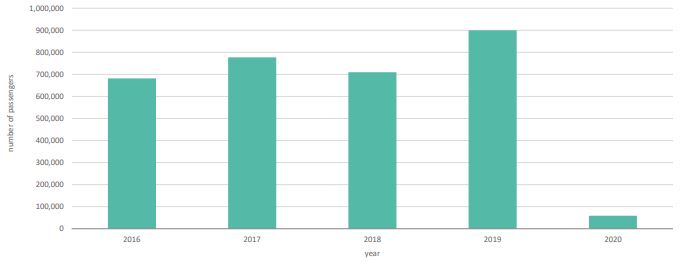
The number of trips between Malta and Gozo in 2020 amounted to 29,052, up by 5.1 per cent over 2019. The average number of passengers per trip decreased to 130 in 2020 from 214 in 2019, while the average number of vehicles per trip amounted to 53, a decrease of 12 vehicles over the previous year.
In the year under review, a decrease of 2,143,799 passengers and 230,771 vehicles were carried by the Gozo Channel ferries when compared to 2019.
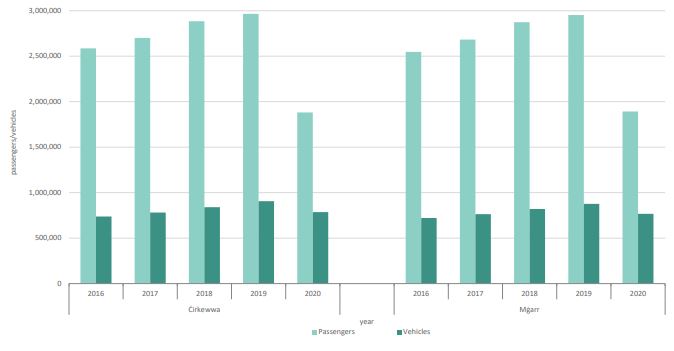
Passengers carried by ferry between Valletta and the Three Cities registered a decrease of 68.7 over 2019, totalling 179,249…
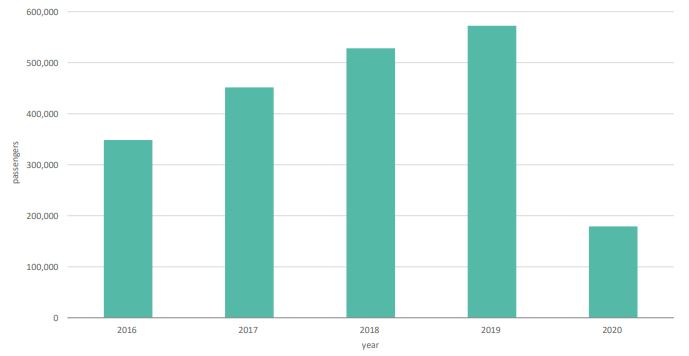
… while passengers crossing by ferry between Valletta and Sliema totalled 227,589 or a decrease of 75.0 per cent over 2019.
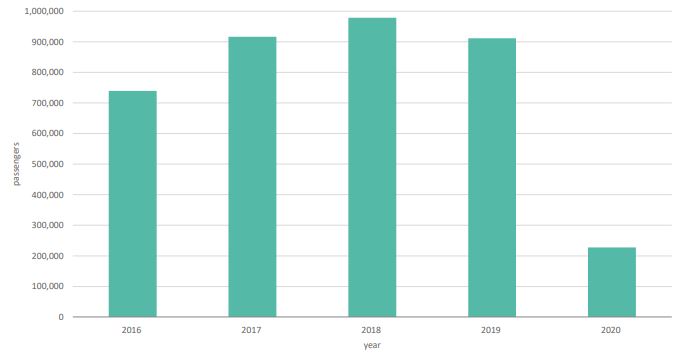
On a monthly basis the ferry between Valletta and the Three Cities carried the most passengers during February, totalling 43,462. February also registered the highest number of passengers carried on the ferry crossing between Valletta and Sliema, totalling 57,923. These figures indicate that the service was yet to recover by the end of 2020.
Road
Although the closure of borders and the severe travel restrictions had little impact on road travel within Malta, decreased economic activity and measures to promote work-from-home still contributed to fewer cars on the streets.
In fact, the estimated distance travelled by motor vehicles in the Maltese Islands in 2020, the total kilometres driven by all licensed motor vehicles in Malta for which data was available, was estimated to be almost 2,500 million km, or a decrease of 19.1 per cent over 2019.
Meanwhile, the total number of commuters using public transport amounted to 33.78 million passengers, a decrease of 41.2 per cent over 2019.
Final deeds of sale rise 8.4%, promise of sale agreements up 6.8% in November
Malta’s residential property market strengthened again last month
Employment rises 4.8% as labour market continues to expand
66.8% of the population aged 15 and above are employed
MTA donates €3,000 award to marine conservation NGOs Sharklab Malta and Nature Trust
'Sharklab Malta and Nature Trust have been instrumental in supporting our marine environment'




